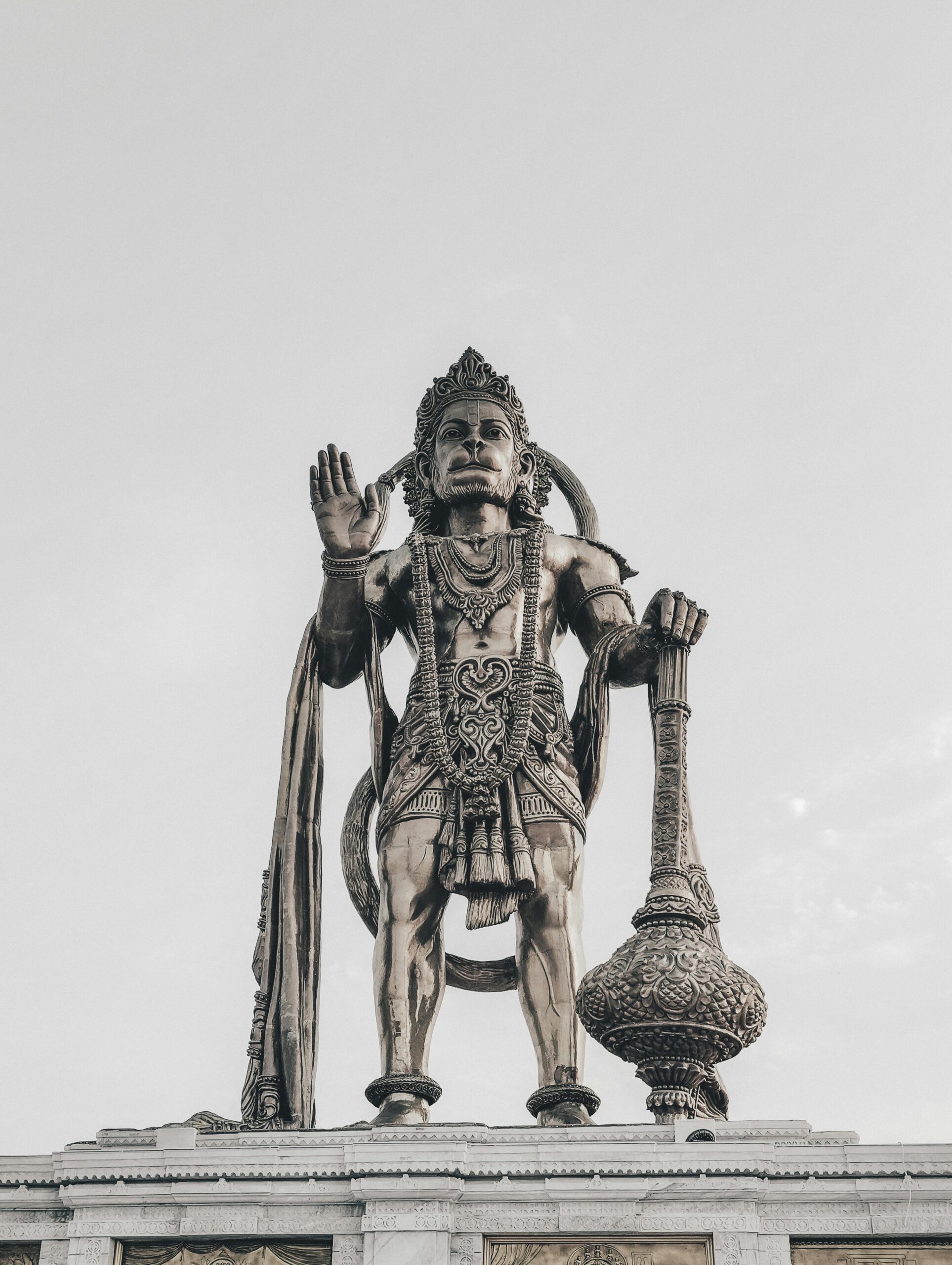What is the Hanuman Chalisa?
The Hanuman Chalisa is a devotional hymn dedicated to Lord Hanuman, composed by the great saint and poet Tulsidas. It consists of 40 verses (“chalisa” meaning forty), each praising the virtues, strength, and devotion of Lord Hanuman. It is admired for its spiritual and protective powers and has been a source of solace for millions.
Hanuman is revered as a symbol of strength, perseverance, and devotion. The Hanuman Chalisa glorifies his immense courage, wisdom, and his unwavering loyalty to Lord Rama. Each verse narrates the heroic deeds of Hanuman, from his childhood mischief to his pivotal role in the epic Ramayana. Devotees believe that reciting the Chalisa invokes Hanuman’s blessings, offering protection from evil, alleviating suffering, and bringing peace and prosperity.
The hymn also emphasizes the moral and ethical values that Hanuman embodies. It serves not only as a prayer but also as a guide for righteous living, inspiring devotees to cultivate virtues like humility, devotion, and selfless service. Reciting the Hanuman Chalisa is a spiritual practice that strengthens faith and connects devotees with the divine energy of Lord Hanuman. Whether in times of hardship or in daily life, the Hanuman Chalisa remains a beacon of hope and strength for its followers.
Why Was the Hanuman Chalisa Written?
Tulsidas wrote the Hanuman Chalisa to glorify Lord Hanuman and inspire unwavering devotion among the masses. The hymn highlights Hanuman’s strength, wisdom, and devotion to Lord Rama, serving as an example of selfless love and service.
When Did Tulsidas Write the Hanuman Chalisa?
The Hanuman Chalisa was composed in the 16th century, during Tulsidas’ lifetime (likely between 1575-1623 CE). Tulsidas wrote it in the Awadhi dialect to ensure its accessibility to the common people.
The Reason Behind Writing it
- Overcoming Personal Challenges: Tulsidas faced numerous difficulties in his life, and his devotion to Hanuman helped him overcome them. Writing it was his way of expressing gratitude and seeking blessings.
- Spiritual Awakening: The hymn was written to guide people towards a path of faith and devotion.
- Divine Protection: According to legend, Tulsidas composed the Chalisa while imprisoned by the Mughal emperor Akbar. By invoking Hanuman through this hymn, he is believed to have brought about a miraculous event that led to his release.
- Universal Accessibility: Tulsidas wanted to make spirituality accessible to everyone, which is why he wrote the Hanuman Chalisa in the common language rather than Sanskrit.
Significance of Hanuman Chalisa
- Spiritual Growth: Regular recitation fosters devotion and inner peace.
- Protection and Courage: Hanuman’s blessings provide strength to overcome fears and challenges.
- Mental Clarity: The rhythmic chanting helps focus the mind and reduce stress.
- Removing Obstacles: It is believed to clear hurdles in life and bring success.
- Strengthening Devotion: The hymn reinforces faith in Lord Rama and Hanuman’s unwavering loyalty.
When and How to Chant the Hanuman Chalisa
Best Time to Chant
The Hanuman Chalisa can be recited at any time, but certain times are considered especially auspicious:
- Early Morning: Chanting at dawn brings positivity and sets the tone for the day.
- Evenings: Reciting it during twilight cleanses the mind after a busy day.
- Tuesdays and Saturdays: These days are dedicated to Lord Hanuman and are ideal for chanting.
- Hanuman Jayanti: On this day, reciting the Chalisa holds immense spiritual significance.
The Right Way to Chant
- Prepare Spiritually: Take a bath and wear clean clothes.
- Create a Sacred Atmosphere: Light a diya or incense to set the mood.
- Focus on Devotion: Chant with a pure heart and unwavering faith.
- Consistency: Recite the Hanuman Chalisa daily or weekly for maximum benefits.
Below is the Youtube video for Famous Song on Hanuman Chalisa by Gulshan Kumar ji







